
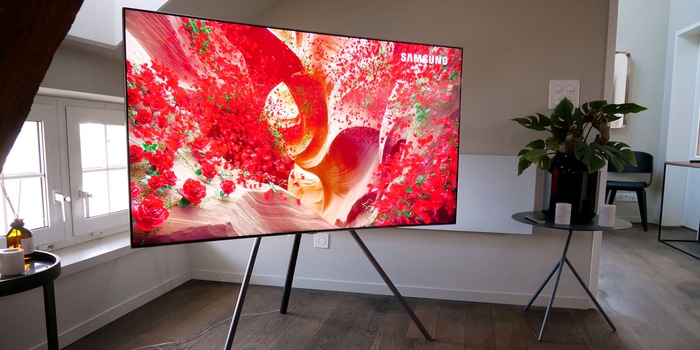
Launch event in Zurich: Samsung's new QLED TVs are here
Samsung has invited us to the presentation of its second generation of QLED TVs. The new TVs are not only more beautiful, but also more intelligent. I attended the event and, in this article, I'll tell you why you can look forward to it, because there are reasons.
Thursday evening in Zurich. The pleasantly mild weather invites you to go out and people are strolling through the small pedestrian streets of Niederdorf. This is where Samsung held its launch event and I went along. On the programme: the new generation of Samsung QLED TVs.
See all the new generation QLED TVs.
A quick reminder: what does QLED stand for?
Samsung's QLED TVs are enhanced LCD TVs. The TV's panel is made up of pixels with liquid crystals and colour filters - these are what generate the image. The pixels are illuminated by Edge LEDs, diodes placed around the edge of the panel. This is why they are often referred to as LED televisions. To ensure that the light from the LEDs is distributed evenly across the pixels, Samsung has inserted a special plastic film between them.
This plastic film on QLED TVs is made up of "Quantum Dots". These nanoparticles ensure a wider colour gamut and better brightness than traditional LCD TVs. The quantum dots absorb LED light and emit coloured light themselves. What's more, the sharper LED backlighting saves the work of the LCD screen filter. As a result, the viewer benefits from higher brightness and maximum brightness increases.
With Ambient Mode in the living room
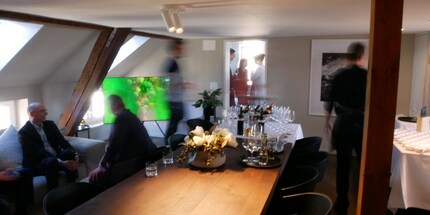
There really are a lot of people in this 3rd-floor loft suite. No wonder, because when Samsung calls, the tech journalists come running. Samsung is one of the few manufacturers in the TV industry that hasn't yet bet on OLED.
Dario Casari, Vice President of Samsung Switzerland, opens the event. He knows exactly where the TV giant's journey will lead.
"TVs are getting bigger and bigger," he says, "which is why they should become ever more beautiful to fit in well with the living room. It's been a long time since TVs were just commodities."
This isn't just talk. Last year, Samsung already tried to create a TV in the zeitgeist and called it "the Frame". A quick reminder: switched on, the Frame is a TV like any other. When you switch it off, it goes into Art mode. The TV then imitates a work of art, complete with frame and automatic brightness adjustment according to the ambient light.
With Ambient Mode, the South Korean engineers dare to move away from TV-sized art galleries. Put simply, Ambient Mode is art mode without art. But it offers a host of new displays such as the time, current weather, outdoor temperatures, headlines or your photos. Ambient Mode also lets you play background music. Rather fun: if you take a photo of your TV in front of the wall, in Ambient Mode it generates a wallpaper that blends in with the wall.
The new Ambient Mode pleases. "Yes, yes, I think it's pretty cool," I mumbled.
The new Ambient Mode pleases.
Ambient Mode can be controlled not only with the remote control, but also with a smartphone. Samsung has created a new application: SmartThings. This will replace all previous Samsung apps. The devices are paired via Bluetooth. They must subsequently just still be on the same network.
Although we're only talking about QLED TVs today, the SmartThings app gives us a little insight into Samsung's Smart Home concept. If the TV manufacturer is to be believed, in the not-too-distant future we'll be using the app to connect and control all household appliances such as hoovers, light switches, fridges, music systems and everything in between. On one condition, that they are Samsung or Samsung-compatible devices. SmartThings already exists for Android phone and iPhone.
The unanswered question: power consumption in Ambient Mode. That's something I'll be able to find out in a later test.
The smart TV as an integral part of the Smart Home
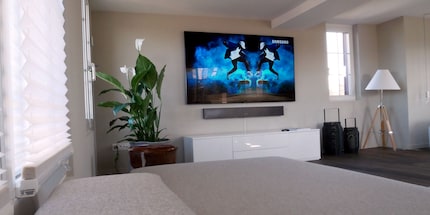
Once installed on your phone, the app automatically connects to the TV and any other available devices. So you can ask the tumble dryer to send a message to the TV when the washing is dry, or ask the hoover to make itself useful while watching your favourite show.
Yes, we really are living in the future.
SmartThings also accesses all your Google, Netflix or Amazon Prime accounts it finds on your phone - if you allow it to. It integrates connected apps into your TV's Smart TV interface. The icing on the cake: all connected devices and accounts can be controlled with a single remote, as long as they're linked to SmartThings with the Smart TV - even games consoles or Blu-ray players.
.
This is indeed convenient.
One Invisible Connection - finally a proper cable!
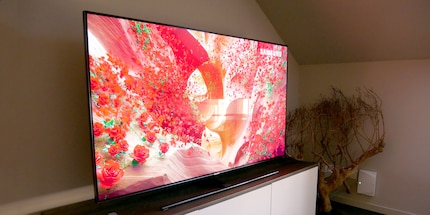
Samsung continues to boast about its minimalist design and calls it "true craftsmanship". Simply a marketing thing. Can't argue with that, these TVs are very chic.
The "360-degree" concept supports this: you can watch your TV from all angles without having a heart attack from unsightly cables or ugly plastic surfaces.
For example:
- backface
- thin aluminium frame
- hidden cables in stand
- One Connect Box
- One Invisible Connection
It sounds (still) rather unspectacular. We're familiar with the One Connect Box from last year's QLEDs: all the important connections, such as HDMI inputs, USB or LAN ports, are in the external One Connect Box. The box is connected to the TV via a transparent cable. Cool: the tangle of cables on your TV is out of sight and can be stored in a drawer in your TV cabinet, for example. Less cool: the TV's power supply is not routed through the box, but via a clearly visible cable. Samsung has somehow missed out on its own concept.
This year, the manufacturer has improved. The new transparent cable between the TV and the One Connect Box is now called the "One Invisible Connection". At last, the power supply also passes through this cable. Well done! The cable itself is five metres long, but also comes in a 15-metre version - in case you live in a castle. So you can hang your QLED like a picture frame on the wall without ugly cables coming out of it. Samsung admittedly committed to this last year, but has now delivered on its promise.
Overview of the range
The name of the product: the higher the number, the better the QLED equipment. "Just like a BMW," jokes Adrian Althaus, Head of Productmanagement at Samsung Switzerland.
The product name: the higher the number, the better the QLED equipment.
You dive into the world of QLED with the Q6FN. Its equipment is a little slimmed down, but the price is reasonable for QLED quality. With its 1000 nits (luminance unit), the screen offers a little less brightness than top-of-the-range models. The TV is not compatible with a No-Gap mounting solution and is not equipped with the One Invisible Connection.
The Q8FN and Q7FN are almost identical, except for the panel design: the Q8FN is clad entirely in aluminium, the Q7FN has a chic black structured surface on the rear. At maximum brightness, both achieve a very good 1500 nits.
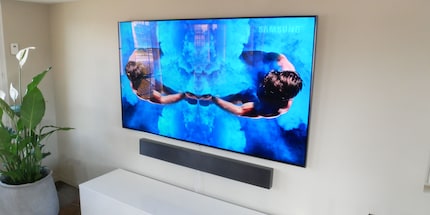
The Q9FN is the centrepiece of the new generation. It even shines with a maximum of 2000 nits. This is the first QLED whose LEDs are not placed around the edge of the panel. Instead, there is a wall of LEDs directly behind the pixels. This allows individual pixels to be illuminated much more precisely. The result is better black values and therefore better contrast for you as the viewer. War has been declared on OLED technology, which offers the best black values to date.
This is a good thing. Competition drives business.
What else is there to say? Since September 2017, all QLEDs have mastered the ultra-modern and open HDR standard "HDR10+", but there is currently a lack of compatible content/sources. There's Amazon Prime and... that's it. If you know of any other sources, write them in the comments. A new processor is due to update image processing, particularly when it comes to scaling Full HD content to Ultra HD.
.
And very important too: all QLED TVs are "Ultra HD Premium" certified.
A quick look
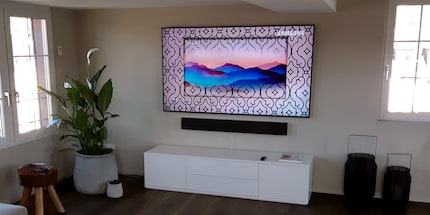
QLEDs aren't just stylish, they've also become smarter. This means that thanks to the famous One Connect Box, which is connected with the One Invisible Connection Cable, the TV can easily be set up in any living room. The SmartThings application integrates QLEDs into Samsung's Smart Home concept. Tizen, the operating system for Samsung TVs, which is receiving a few small updates, is easier than ever to use.
I naturally haven't yet been able to test the picture quality. But my first impressions are very good. I was most surprised by the Q9FN's black values. It looks like someone is catching up with OLED technology rather quickly, especially when it comes to black values. But until I've had a chance to test it with my own equipment and under my own conditions, I'd rather not make a final judgement.
I'm really looking forward to being able to start testing.
I write about technology as if it were cinema, and about films as if they were real life. Between bits and blockbusters, I’m after stories that move people, not just generate clicks. And yes – sometimes I listen to film scores louder than I probably should.
From the latest iPhone to the return of 80s fashion. The editorial team will help you make sense of it all.
Show all



